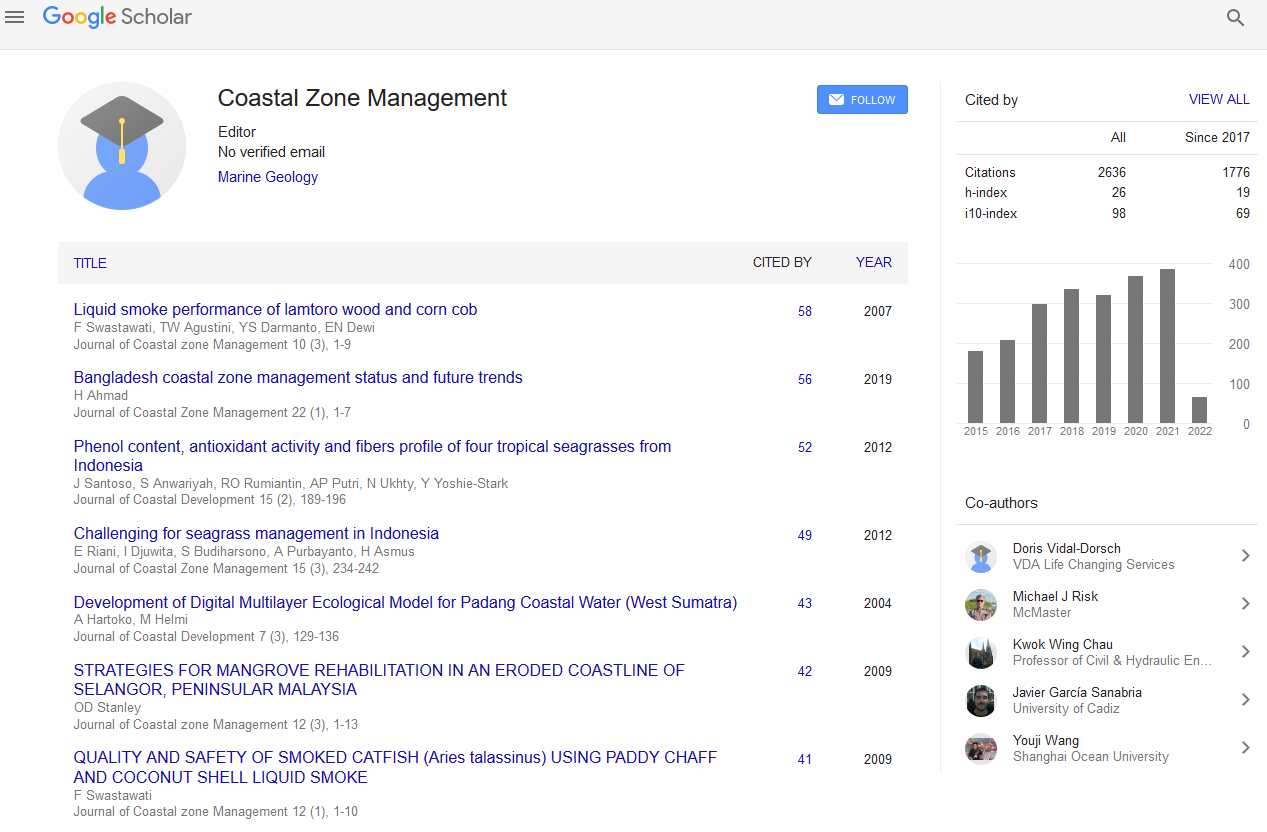Indexed In
- SafetyLit
- RefSeek
- Hamdard University
- EBSCO A-Z
- OCLC- WorldCat
- Publons
Useful Links
Share This Page
Journal Flyer

Open Access Journals
- Agri and Aquaculture
- Biochemistry
- Bioinformatics & Systems Biology
- Business & Management
- Chemistry
- Clinical Sciences
- Engineering
- Food & Nutrition
- General Science
- Genetics & Molecular Biology
- Immunology & Microbiology
- Medical Sciences
- Neuroscience & Psychology
- Nursing & Health Care
- Pharmaceutical Sciences
Abstract
New Modified Equation of Longshore Current Velocity at the Breaking Point (for Mixed and Gravel Beaches)
Christos Antoniadis
Wave breaking is the dominant process in the dynamics of nearshore water movements resulting in sediment
transport. The transformation of the subsequent particle motion from irrotational to rotational motion
generates vorticity and turbulence and this affects the sediment transport. An improved understanding of the
location of the breaker point and characteristics of the wave under these changing parameters is essential to
our understanding of short and long-term morphological beach development.
This paper reports a series of 3-dimensional physical model tests to measure longshore current data,
generated by oblique wave attack, along gravel and mixed beaches with a uniform slope and a trench. The
studies described in this paper aim to improve the Longuet-Higgins’s formulae which predicted the longshore
current velocity at the breaking point.

